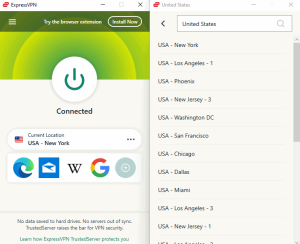
As a customer-centric organization, Snowflake never stops innovating to help its customers derive greater value. This includes evolving and improving the single elastic performance engine that powers the Snowflake Data Cloud to help existing workloads run faster, more efficiently, and with more transparency.
At this year’s Snowday, Snowflake announced new performance enhancements that will help customers speed up important queries and remove administrative burdens—all while improving the economics of working with Snowflake. What’s more, these improvements will largely be available automatically, without requiring any user action, helping customers get more compute power for each credit.
“Our success is predicated on our customers being successful when using Snowflake,” says Artin Avanes, Director of Product Management at Snowflake, “Which is why we continually strive to provide optimal performance and improve economic value for customers. This has been the case since Snowflake’s inception, and ever since then we have been continuously evolving Snowflake’s platform.”
Faster queries
From eliminating unnecessary joins to reducing the latency of selective queries, Snowflake has rolled out new enhancements to its single engine that enable faster performance automatically. Snowflake’s new capabilities include:
- Query Acceleration, now in public preview, which automatically provides customers with a burst of compute power to handle outsized queries, then scales back to the designated virtual warehouse size..
- Join elimination, now generally available, which uses query logic to simplify queries and reduce processing time.
- Search Optimization Service offers new enhancements including support for tables that have masking and row access policies (in private preview) as well as individual column selection for cost control (in public preview). With this update, you can now choose which columns to include in a search or let Snowflake handle it for you (the default).
- Top-K Ordered Selection optimization, now in private preview, which reduces latency for queries that select the first (top) K results in a sorted database by 2-3X. One Fortune 100 bank, for example, saw its selective queries get 10x faster, while a cybersecurity vendor saw its selective queries execute in under 10 seconds instead of two minutes.
These enhancements combine to improve speed and lower the administrative burden on Snowflake customers.
Cost optimizations
Better performance isn’t enough; we also want to make it easier for customers to understand the value they’re getting from Snowflake, and to make more informed decisions about their queries and workloads within the platform in order to optimize costs. That’s why we also unveiled a set of new views that will provide greater transparency to our users, including:
- Account Usage Details, now in private preview, which helps customers run cost-benefit analyses of services such as Auto-Clustering and Search Optimization. Specifically, customers will be able to see the quantity of partitions pruned by these services as well as investigate any clustering or search optimization maintenance charges. Additionally, we’ll release two new table history views, currently in development, which help customers determine the magnitude and impact of data loads or modifications on tables, as well as identify potential optimizations.
- Programmatic Access to Query Profile Statistics, in public preview soon, which will let customers analyze long-running and time-consuming queries more easily. This view will also identify (and let users resolve) performance problems such as exploding joins before they impact the end user.
We’re always working to improve and evolve our single engine so you gain greater performance and value from Snowflake without additional complexity.
Faster queries and cost optimizations are just some of the exciting things we’re building. We invite you to learn about additional important platform enhancements announced at Snowday here.
Forward-Looking Statements
This post contains express and implied forward-looking statements, including statements regarding (i) Snowflake’s business strategy, (ii) Snowflake’s products, services, and technology offerings, including those that are under development or not generally available, (iii) market growth, trends, and competitive considerations, and (iv) the integration, interoperability, and availability of Snowflake’s products with and on third-party platforms. These forward-looking statements are subject to a number of risks, uncertainties and assumptions, including those described under the heading “Risk Factors” and elsewhere in the Quarterly Reports on Form 10-Q and Annual Reports of Form 10-K that Snowflake files with the Securities and Exchange Commission. In light of these risks, uncertainties, and assumptions, actual results could differ materially and adversely from those anticipated or implied in the forward-looking statements. As a result, you should not rely on any forward-looking statements as predictions of future events.
© 2022 Snowflake Inc. All rights reserved. Snowflake, the Snowflake logo, and all other Snowflake product, feature and service names mentioned herein are registered trademarks or trademarks of Snowflake Inc. in the United States and other countries. All other brand names or logos mentioned or used herein are for identification purposes only and may be the trademarks of their respective holder(s). Snowflake may not be associated with, or be sponsored or endorsed by, any such holder(s).
Originally posted on November 9, 2022 @ 4:30 am

